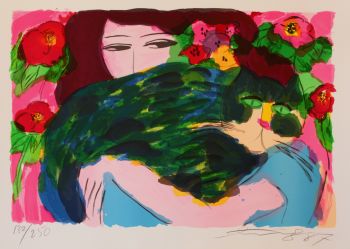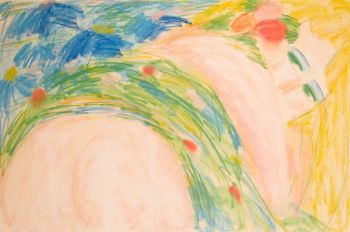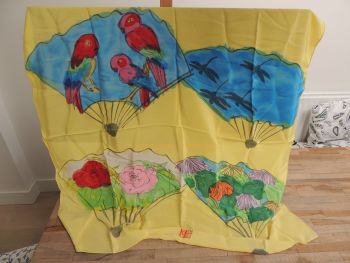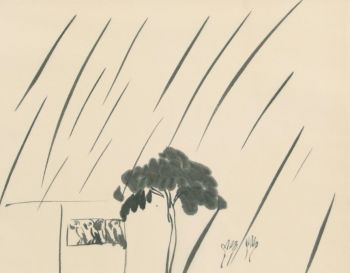TEFAF: Thirty Years of Excellence (Part II)
Inspired by our previous highlight of five masterpieces not to miss at TEFAF Maastricht 2017? Because there is just so much to enjoy at the world’s premier fair for art, antiques and design, we bring you two other admirable works in this second part!
Fig. 1; Walasse Ting, Untitled. Acrylic on rice paper, 47x36 cm.
Referring to himself as a “butterfly”, the Chinese-American contemporary artist Walasse Ting was profoundly inspired by the beauty and desires of life.
He adored women, flowers and animals, and they served well as his artistic subjects. The portrait of a female nude in Untitled is painted in Ting’s distinctive and illustrative style, characterized by the use of vibrant and fluorescent colours, which he began to develop after moving to New York in 1957.
On the right of the woman’s head a bunch of flowers is discernible; this vivid palette of oranges, purples and greens brilliantly contrasts with the woman’s fluorescing yellow skin. Ting subtly applied green eyeshadow, in order to highlight her blue eyes. The nude is rendered in delicate sketchy outlines, while her body lacks depth due to the absence of shadows, calling to mind the flatness of Japanese print designs but also Henri Matisse’s Fauve paintings.
The picture has been portrayed on rice paper and is supplied with a seal containing Chinese characters, reflecting the artist’s Asian origins.
Fig. 2; Joost van Geel (Published by Jacob Quack), Panoramic view of Rotterdam, “1665” [=not before 1675].
Large etched and engraved panoramic view of Rotterdam on 6 sheets, the whole mounted on paper, 57×262 cm as assembled.
A talented pupil of Gabriel Metsu, the Dutch Golden Age artist Joost van Geel was specialized in portraits and genre pieces as well as seascapes.
One of his most famous works is an etching and engraving of 17th century Rotterdam (fig. 2, available at Antiquariaat Forum).
It offers a rare and magnificent panoramic view of Rotterdam from the Nieuwe Maas river. To the left of the engraving we see the Eendragt, the flagship of the United Provinces that was destroyed in the Battle of Lowestoft during the Second Anglo-Dutch War in 1655. The skyline of Rotterdam features several important buildings like the Prinsekerk, the St. Laurens Kerk (St. Lawrence Church), the City Hall and the Nieuwe-Hooft Poort.
The city is being flanked by two cherubs in the sky, each holding a coat of arms, representing Holland to the left and Rotterdam to the right. At the bottom left, the mythological sea god Neptune, recognizable by his trident, is assisted by a triton whose conch glorifies the city councillors’ names, displayed in the scallop shell.
Van Geel’s work was published by Jacob Quack, postmaster of Rotterdam, and is possibly the finest 17th century view of Rotterdam.
Joost van Geel (Published by Jacob Quack), Panoramic view of Rotterdam, “1665” [=not before 1675], detail.


![Joost van Geel (Published by Jacob Quack), Panoramic view of Rotterdam, “1665” [=not before 1675].](/images/1bb77a21-f33d-4548-87c7-10970d975016)
![Joost van Geel (Published by Jacob Quack), Panoramic view of Rotterdam, “1665” [=not before 1675], detail.](/images/2b144f2d-d64d-40d9-8e40-ec2f3a9153d3)




